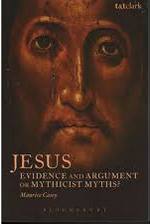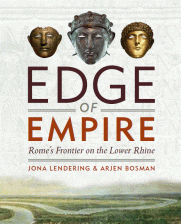
Mithras relief from Dormagen
When, in 2040, the departments of humanities will be closed, an elderly historian will perhaps wonder what caused the demise of scholarship. Probably, he will answer that the humanities no longer wanted to live. Somewhere between 1995 and 2005, the will to survive vanished. The ancient, venerable scholarly disciplines no longer wanted to add something meaningful to the shared heritage of mankind.
The turning point, our historian will find out, had been the invention of the internet. Until then, scholars and scientists had communicated their results to the larger audience in a way that can be described as transmitter and receiver: researchers sent out information – books, journals, TV – and the people listened. But at the turn of the millennium, communication became more interactive. People could talk back and could shape the nature of the discourse. Our historian will gladly quote from Time Magazine, which had chosen “you” as the person of the year 2006. The transmitter-receiver metaphor no longer applied; the best metaphor to describe the way in which scientists and scholars explained themselves to the people, became the dialog.
A fine example, our historian will conclude, is Wikipedia, which was a kind of meeting place of good and bad information. Our historian will concede that the designers of the encyclopedia had realized the importance of debate from the very beginning: if someone had a question about someone else’s contribution, they could discuss these issues. It was good that in these debates, people immediately started to refer to their sources, and our historian will recognize that at the beginning of the twenty-first century, everybody recognized the importance of at least looking scientific or scholarly. Compared to the beginning of the twentieth century, that was a leap forward. The greatest achievement of western civilization in the twentieth century was that one-third of the population had had access to higher education.
Unfortunately, our historian will notice, this was not a guarantee of quality. He will discover that the online debates were easily hijacked by activists, because in the debate between good and bad information, between good and poor scholarship, bad information drove out good. Our historian will find it incredible, but he will establish that reliable information was, at the beginning of the twenty-first century, deliberately kept away from the larger public by pay walls. In the fight against activists, bona fide scholars and scientists fought with their arms tied, and by 2005, the damage was done.
This being the nature of the game, one would have expected that philologists, historians, archaeologists, theologians, philosophers, and other scholars would have fought back, but our future historian will discover that this rarely happened. If something was done at all, it was just presenting the facts, which were often correct indeed, but they were offered without any further explanation.
Still, there were professional researchers who investigated how to explain science and scholarship to the people successfully. They recommended scientists and scholars to explain methods and theories, but few scholars bothered to take care. Where was the book, our historian will be wondering, that explained the Lachmann method or the hermeneutic cycle to the larger audience?
Slowly, he will start to understand why so many people could, at the beginning of the twenty-first century, claim to be scholars, and were never contradicted: the scholars never explained how they achieved their results, giving the impression that scholarship was not a real, professional discipline, but a kind of amateurish hobby to which anyone might contribute. Precisely when information was transferred less by transmitter-receiver and more as a dialog, and when a highly educated audience demanded more information than just facts, the scholars retreated from the debate, not explaining what mattered most.
At the beginning of the twenty-first century, our historian will think, three things ought to have been the top priorities if the humanities were to survive:
- online encyclopedias, written by professional scholars – and of course for free, because the people had already paid taxes and the information was already theirs;
- a sound explanation of methods and theories;
- an active policy to refute errors and mistakes.
Our future historian will notice that scholars refused to live up to the expectations. Of course, there were exceptions. There were some websites on which something was explained, but they were rare, they were created after the damage had been done, and they covered only the first of the three requirements. Too little, too late, too incomplete. There will be a wry smile at the historian’s face when he writes about the self-pity of the early twenty-first century scholars: they were never tired of complaining that nobody seemed to understand why the humanities mattered, but they rarely explained.
The historian will conclude that the humanities had committed suicide. Still, there had been people, inside and outside the universities, who had done their best. People who had refused to join the academic rat race, who had not been interested in the length of their publication list, who were really interested in the dialog with the larger audience.
***
One of these is Roger Pearse, the webmaster of Tertullian.org and a tireless fighter against quack history. In December, he has started a website on the Roman god Mithras. It offers a basic account of the Mithraic mysteries, it offers the sources, and most of all: it offers the arguments to refute theories that present Mithraism as an essentially Persian cult (it isn’t) and that it heavily influenced Christianity (it didn’t).
If we want to avoid that a historian, writing in 2040, will conclude that our generation is the one that killed scholarship, we desperately need more websites like these. But I am not optimistic. As long as our academics are more interested in the length of their publication list than in their duty to the larger audience, the humanities are doomed.




 Posted by Jona Lendering
Posted by Jona Lendering 

















 Subscribe to feed
Subscribe to feed
You must be logged in to post a comment.